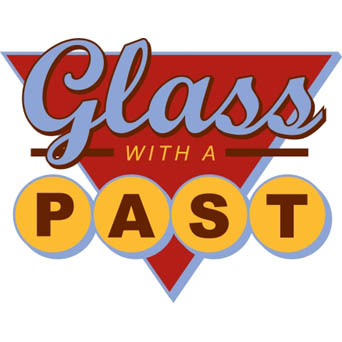Now that you have made your fused bottle glass gecko with the free pattern for October, what else can we do with him? One thing to consider is adding mica to him for some color and sparkle! It’s easy, grab your gecko and we’ll get started. Mica needs some ‘tooth’ or texture to the glass to really fuse well, so, our first step is to etch our gecko. We are going to use an acid etching paste:
 Following the instructions on the paste, we paint that gunk onto our gecko, carefully so we don’t have extra etched places:
Following the instructions on the paste, we paint that gunk onto our gecko, carefully so we don’t have extra etched places:
 After he’s all covered, we wait 60 seconds (follow the instructions on whatever brand of paste you are using!
After he’s all covered, we wait 60 seconds (follow the instructions on whatever brand of paste you are using!
 Now we’re ready to paint him with mica. I’m using mica paints that I made with mica powder and hairspray. If you haven’t used mica this way before, start with 1/8 tsp dry mica powder with 1 tsp liquid hairspray. The paint will be thin, and the mica settles out quickly, so stir often! I’m using a selection of metallic golds and copper:
Now we’re ready to paint him with mica. I’m using mica paints that I made with mica powder and hairspray. If you haven’t used mica this way before, start with 1/8 tsp dry mica powder with 1 tsp liquid hairspray. The paint will be thin, and the mica settles out quickly, so stir often! I’m using a selection of metallic golds and copper:
 I started with the diamonds on his back and them filled in the rest of him with a different color of gold, and made his feet an even darker shade of gold.
I started with the diamonds on his back and them filled in the rest of him with a different color of gold, and made his feet an even darker shade of gold.
 And finished with copper dots in the diamonds. This is where I made a mistake, only the mica closest to the glass will stick, I should have painted on the dots FIRST! My dots probably won’t make it through firing:
And finished with copper dots in the diamonds. This is where I made a mistake, only the mica closest to the glass will stick, I should have painted on the dots FIRST! My dots probably won’t make it through firing:
 Now, take him back to the kiln, put him on a prepared kiln shelf mica side UP and fire using a SLUMP schedule. We don’t want to fuse him as the glass will flatten back out, and we want to keep the mica under 1400F degrees. If you wanted to make him into a dish, you could slump him during this firing too.
Now, take him back to the kiln, put him on a prepared kiln shelf mica side UP and fire using a SLUMP schedule. We don’t want to fuse him as the glass will flatten back out, and we want to keep the mica under 1400F degrees. If you wanted to make him into a dish, you could slump him during this firing too.
As predicted, after I washed off the extra mica, my copper dots didn’t stick, ah well, such is the life of a glass artist!



